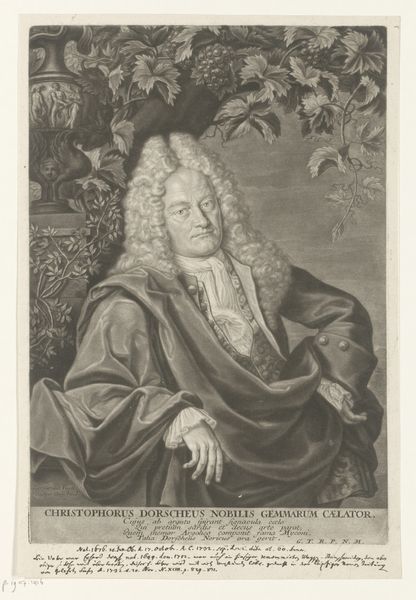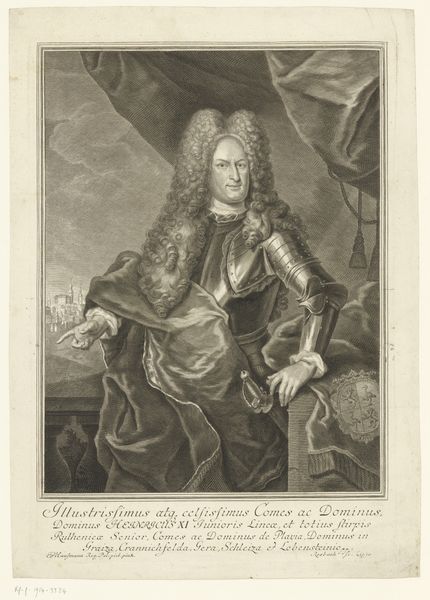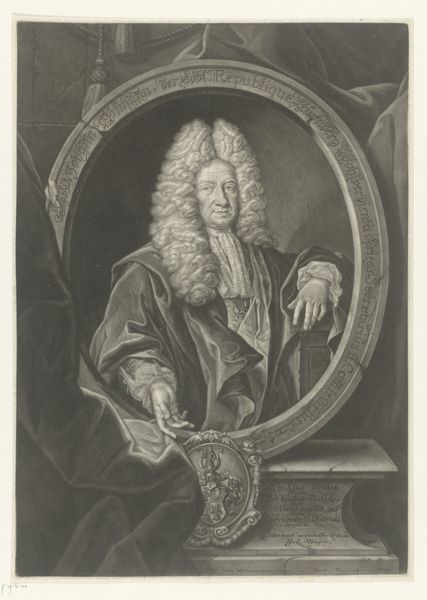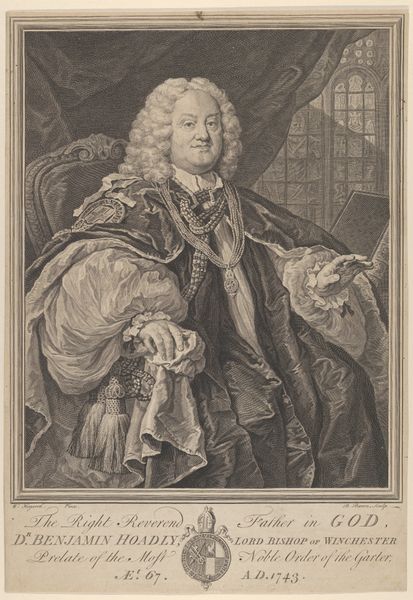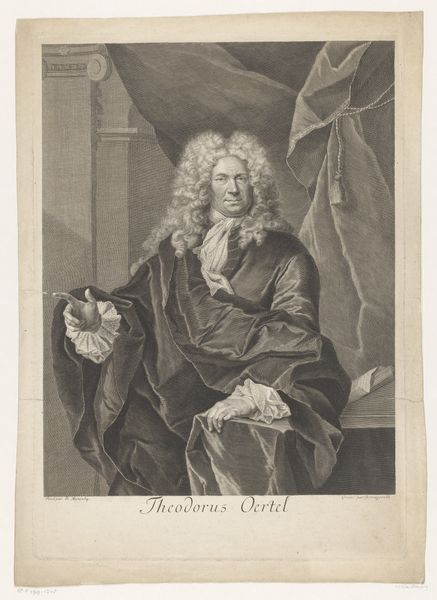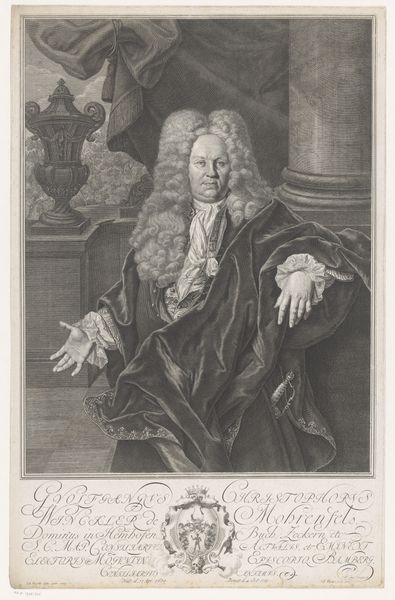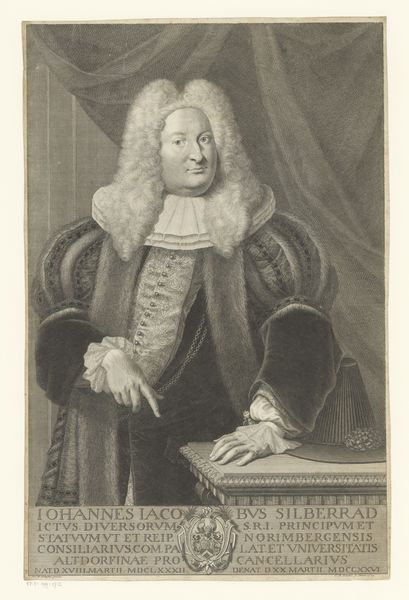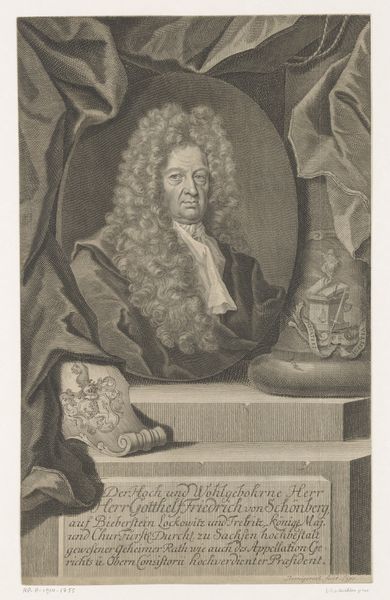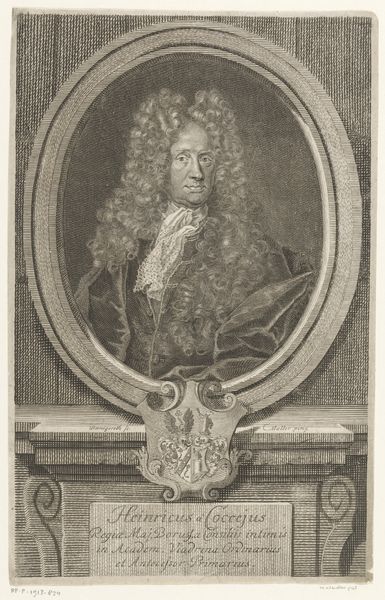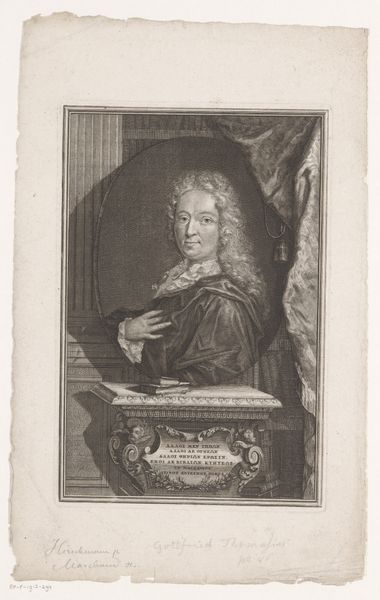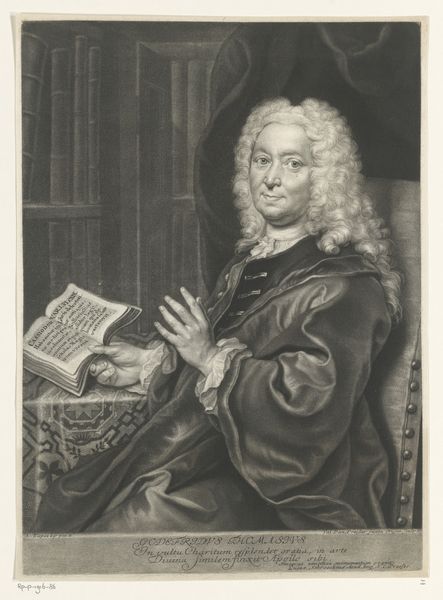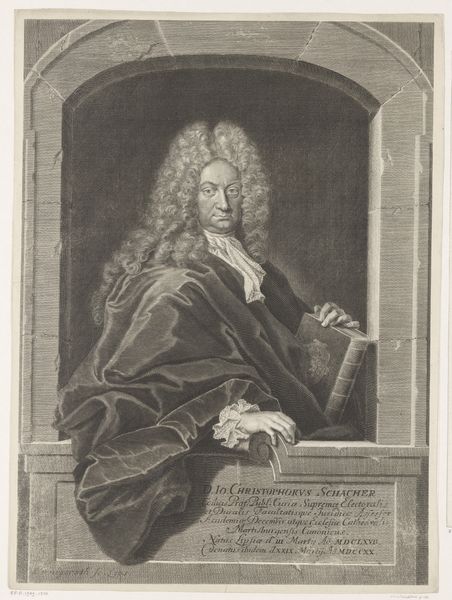
engraving
#
portrait
#
baroque
#
old engraving style
#
history-painting
#
engraving
Dimensions: height 453 mm, width 390 mm
Copyright: Rijks Museum: Open Domain
Editor: So, this is "Portret van Johann Heinrich Russe," an engraving by Georg Martin Preissler, sometime between 1728 and 1754. I’m struck by the subject's severe expression. It definitely projects a sense of authority. How do you interpret this work, especially given its historical context? Curator: That's a keen observation. Beyond the formal elements of Baroque portraiture—the elaborate wig, the heavy drapery—it's essential to consider what this image signifies about power and societal structures. Russe was clearly a man of status; his dress and surroundings advertise it. But I wonder, what kind of power does this portrait aim to project, and for whom? Is it solely a celebration of individual achievement, or does it speak to broader issues of class and privilege in 18th-century Nuremberg? Consider how this image might have functioned as a form of social currency, reinforcing existing hierarchies. Editor: That's a good point. The details in the engraving, even the text below, reinforce his social standing. But was this just about solidifying power, or could there be something else? Curator: Precisely! Let's not overlook the potential for subversive readings. While outwardly conforming to the conventions of power, does the portrait perhaps also betray a certain anxiety? How might the artist, through subtle stylistic choices, be hinting at the inherent contradictions within a system built on inequality? Thinking critically, can we unpack it not just as a record, but as a cultural artifact with a complicated story to tell? Editor: I never thought about portraits that way, as possibly hinting at deeper social anxieties, or reflecting power dynamics beyond just surface-level representation. Thanks, that was incredibly insightful. Curator: Indeed. Analyzing historical artworks through a contemporary lens allows us to critically examine the legacy of the past and its influence on our present. It’s about seeing beyond the surface and engaging with the complex social narratives embedded within these images.
Comments
No comments
Be the first to comment and join the conversation on the ultimate creative platform.

